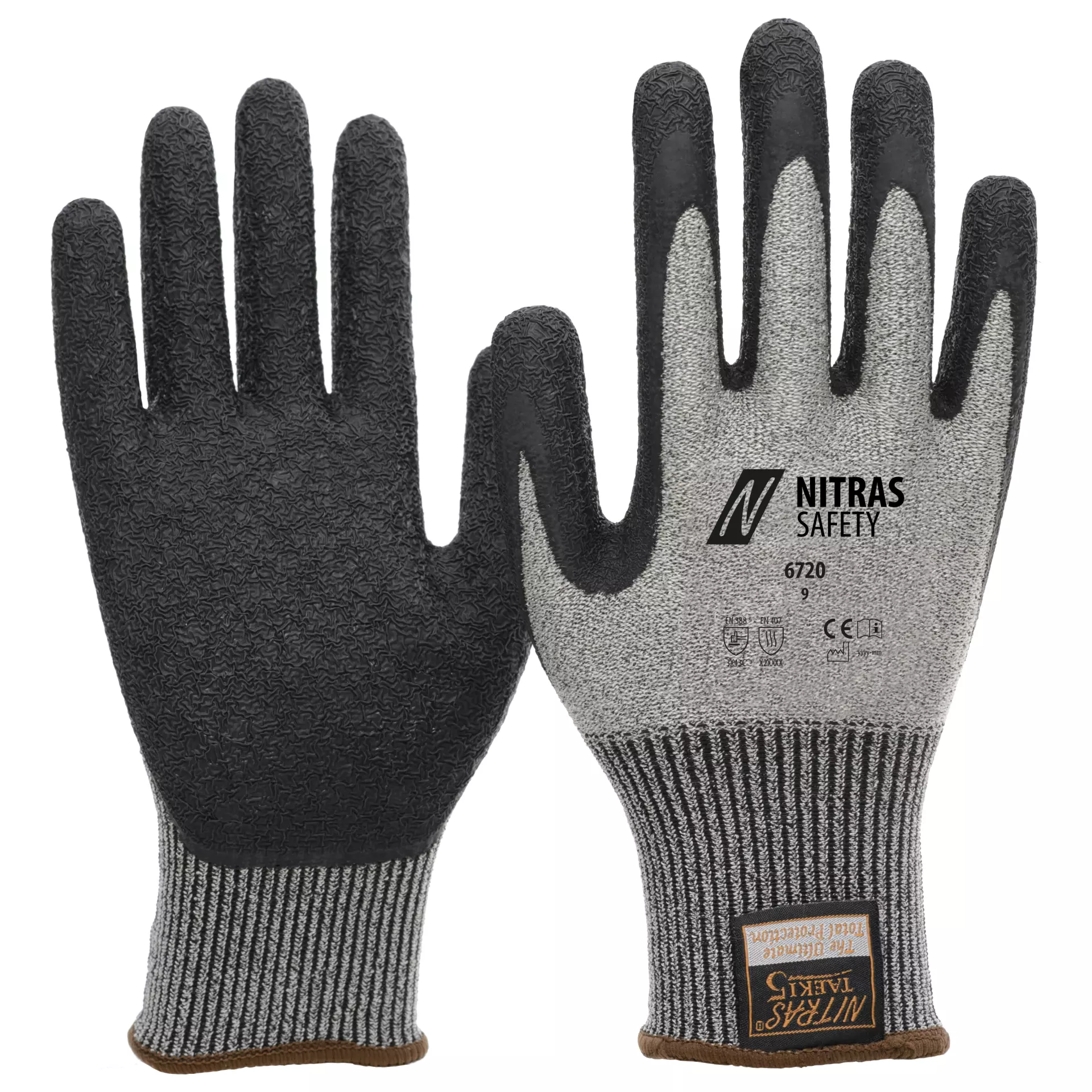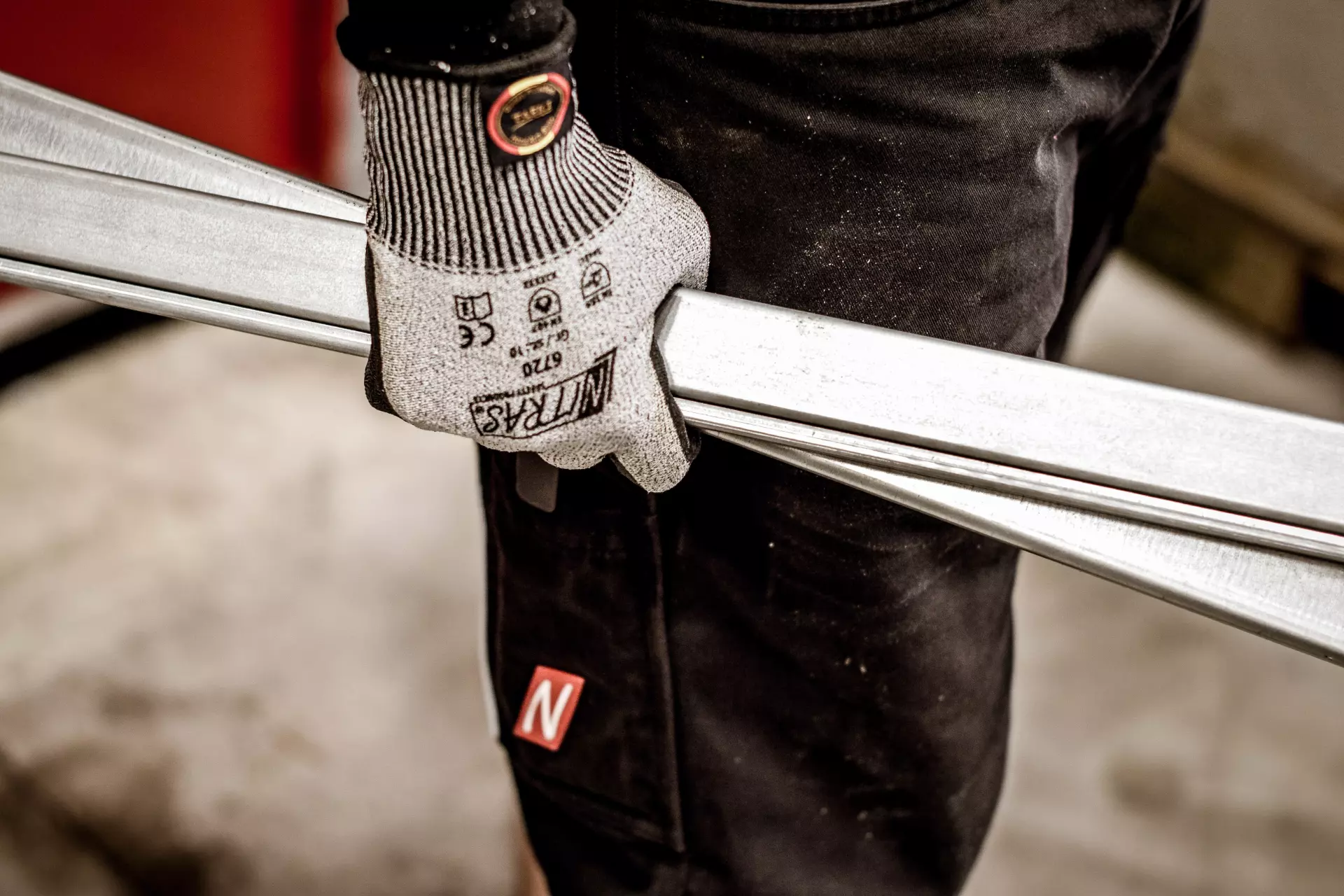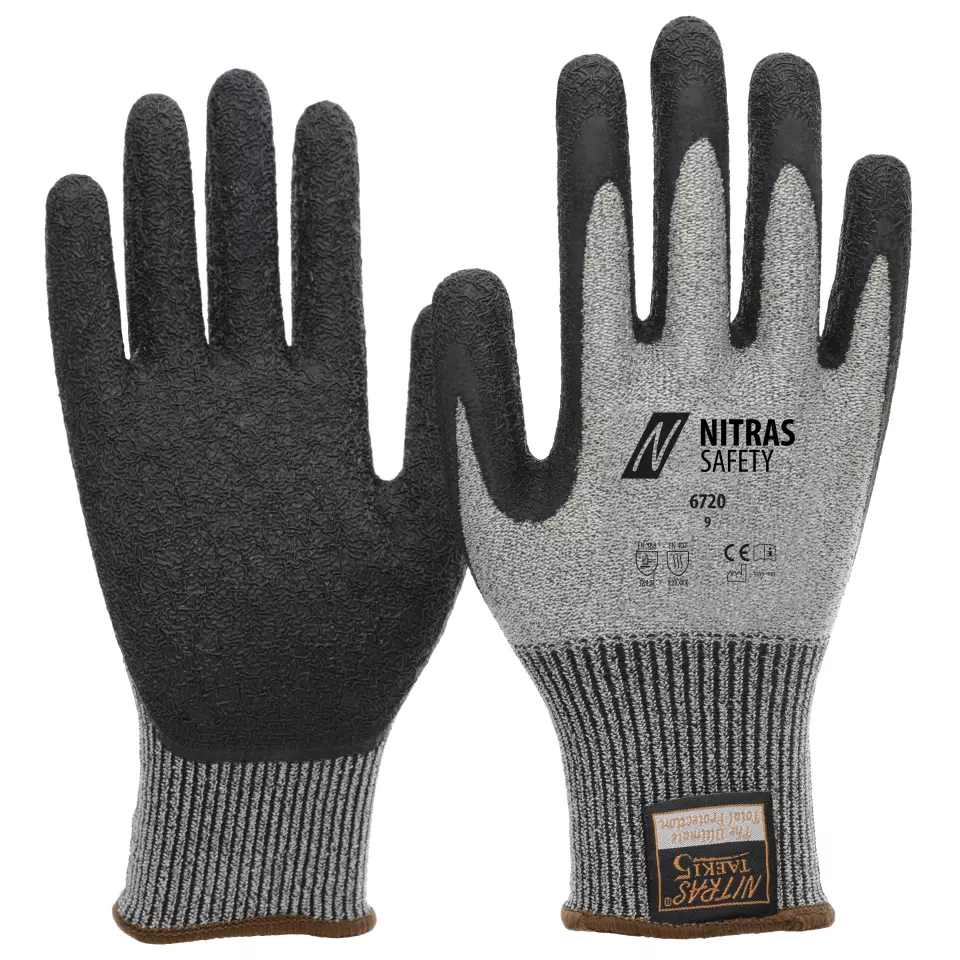

Features You'll Love

Coating Material · Latex
The substance applied to glove surfaces to enhance grip, durability, and protection, with different materials suited for various work conditions.

EN 388 · Cut Resistance, ISO 13997 Level C, Puncture Resistance Level 3, Tear Resistance Level 4
EN 407 · Burning Behaviour Level X, Heat Contact Level 2, Metal Splash Resistance Level X, Molten Metal Resistance Level X, Radiant Heat Level X, Heat Convection Level X
Offers medium protection against cut risks from handling lightweight metals and plastics.
Withstands strong pressure from sharp objects like nails or thick splinters.
Offers the highest level of protection against tearing, withstanding a strong force before ripping.
This product has not been tested for its performance when exposed to an open flame. It is not rated for fire resistance and should not be used for protection against direct contact with flames.
This product provides protection from contact heat up to 250°C for at least 15 seconds. It is ideal for tasks where you might briefly handle hot items, such as in kitchens or workshops.
This product has not been tested for resistance against splashes of molten metal under the EN 407 standard. It does not offer rated protection for tasks where this is a risk, such as welding.
This product has not been tested for resistance against splashes of molten metal. It provides no claimed protection and should not be used for welding, foundry work, or other tasks with molten metal risks.
This product was not tested for protection against radiant heat, which is intense heat that can be felt from a distance. It does not claim to offer protection for tasks involving prolonged exposure to radiant heat sources.
This product was not tested for protection against convective heat, which is the transfer of heat through moving air, such as from a flame. Therefore, it has no claimed performance level for this specific thermal risk.
Nitras
TAEKI Cut protection Gloves, Grey, 10 pairs
TAEKI Cut protection Gloves, Grey, 10 pairs
4.3 / 5
40,00 €
Price per 10 pairs
4,00 € / pair
Choose size
Shipping fee is 7,95 € for orders under 80,00 €
Features You'll Love

Coating Material · Latex
The substance applied to glove surfaces to enhance grip, durability, and protection, with different materials suited for various work conditions.

EN 388 · Cut Resistance, ISO 13997 Level C, Puncture Resistance Level 3, Tear Resistance Level 4
EN 407 · Burning Behaviour Level X, Heat Contact Level 2, Metal Splash Resistance Level X, Molten Metal Resistance Level X, Radiant Heat Level X, Heat Convection Level X
Offers medium protection against cut risks from handling lightweight metals and plastics.
Withstands strong pressure from sharp objects like nails or thick splinters.
Offers the highest level of protection against tearing, withstanding a strong force before ripping.
This product has not been tested for its performance when exposed to an open flame. It is not rated for fire resistance and should not be used for protection against direct contact with flames.
This product provides protection from contact heat up to 250°C for at least 15 seconds. It is ideal for tasks where you might briefly handle hot items, such as in kitchens or workshops.
This product has not been tested for resistance against splashes of molten metal under the EN 407 standard. It does not offer rated protection for tasks where this is a risk, such as welding.
This product has not been tested for resistance against splashes of molten metal. It provides no claimed protection and should not be used for welding, foundry work, or other tasks with molten metal risks.
This product was not tested for protection against radiant heat, which is intense heat that can be felt from a distance. It does not claim to offer protection for tasks involving prolonged exposure to radiant heat sources.
This product was not tested for protection against convective heat, which is the transfer of heat through moving air, such as from a flame. Therefore, it has no claimed performance level for this specific thermal risk.
Product description
Advanced protective gloves combining TAEKI special yarn with latex coating for superior cut resistance and grip performance. These gloves feature partial coating on palm and fingertips with a crinkled finish for enhanced control and tactility. Certified for both mechanical risks and contact heat protection up to 250°C, they offer maximum dexterity with Level 5 rating under EN 420 standards.
Product Features:
- Partially coated palm and fingertips for precise handling
- Crinkled finish for ultimate grip
- Knitted wrist for secure fit
- Maximum dexterity rating
- Contact heat protection up to 250°C for 15 seconds
Technical Details:
- TAEKI special yarn construction
- Latex coating technology
- Level 5 dexterity (EN 420)
Standards:
- EN 388:3443C certification
—Level 3 abrasion resistance
—Level 4 blade cut resistance
—Level 4 tear resistance
—Level 3 puncture resistance
—Level C TDM cut resistance
- EN 407:X2XXXX certification
—Level 2 contact heat resistance